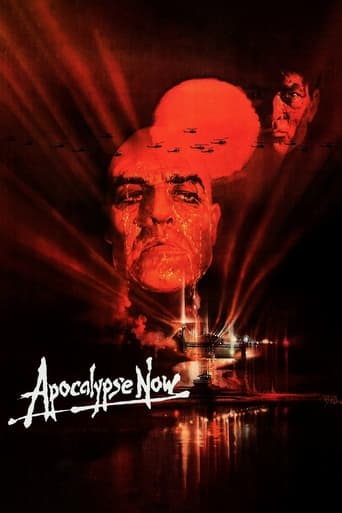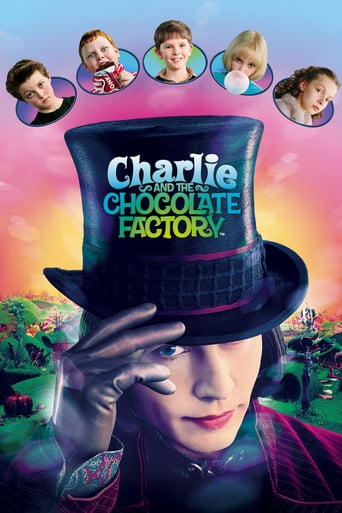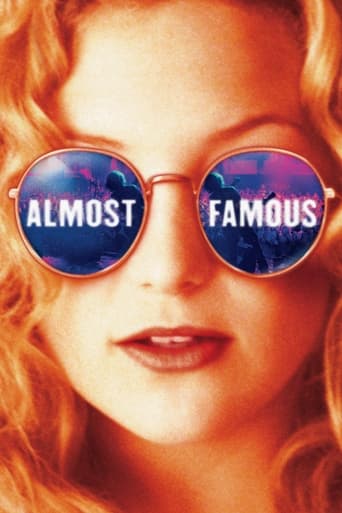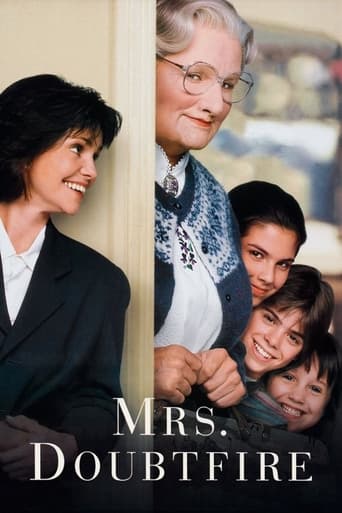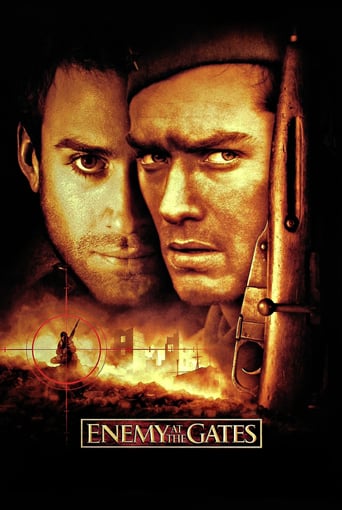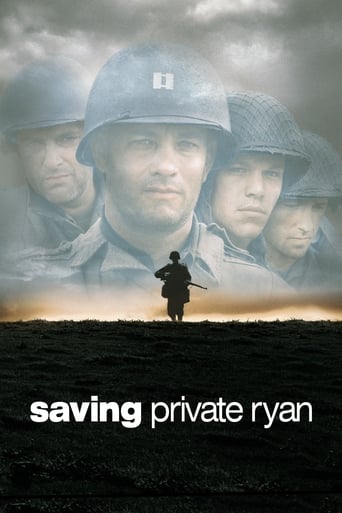
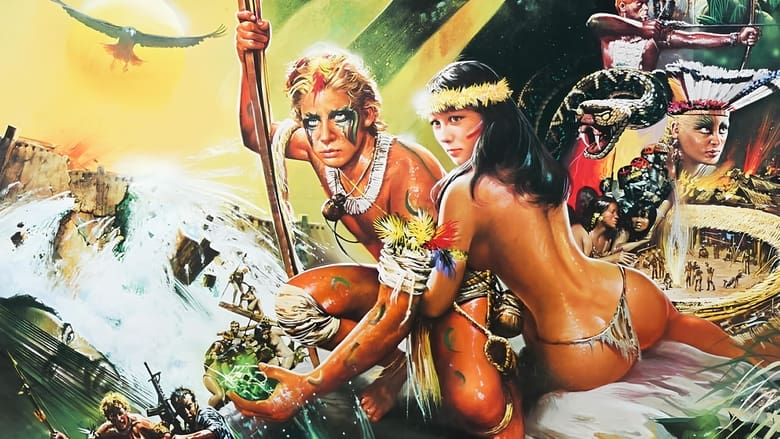
The Emerald Forest (1985)
For ten years, engineer Bill Markham has searched tirelessly for his son Tommy who disappeared from the edge of the Brazilian rainforest. Miraculously, he finds the boy living among the reclusive Amazon tribe who adopted him. And that's when Bill's adventure truly begins. For his son is now a grown tribesman who moves skillfully through this beautiful-but-dangerous terrain, fearful only of those who would exploit it. And as Bill attempts to "rescue" him from the savagery of the untamed jungle, Tommy challenges Bill's idea of true civilization and his notions about who needs rescuing.
Watch Trailer
Cast


Similar titles
Reviews
Best movie of this year hands down!
Sick Product of a Sick System
If you don't like this, we can't be friends.
Good movie, but best of all time? Hardly . . .
When this movie first came out, I was a kid, and to me it was pretty interesting and eye-opening. Certainly compared to doing homework and my paper route in the suburbs, this kid was pretty lucky to get kidnapped by "indians". He got to hang out and swim with naked girls, hunt animals, and fight. There's definitely some wish fulfillment and some fantasy in the film, which presents itself as a sort of "heart of darkness" tale of the encounter between civilization and nature. That's a good starting point, perhaps, for the problems with the film. We have basically 2 tribes, and one of them likes to take lots of drugs and have lots of sex, while the other one is brutal and cannibalistic. This neatly ties the 2 dominant ways that white colonists tend to look at indigenous cultures into a concrete dichotomy: the noble savage vs. the cannibal savage. Also interestingly, the film shows the father figure (Powers Boothe) as a would-be white savior, but his attempts to blow up the dam with dynamite are preempted by the magic of the noble tribesmen. Regardless of the political appeal of this conclusion, the film doesn't really offer any kind of answers for what is to be done to save the rain forests or the indigenous peoples or, more importantly, to help them save themselves by any means other than frogs and magic. It's just, like "Medicine Man" and other films of this type, using the "jungle" and its inhabitants as a means of drawing the audience in and giving us a fantasy version of indigenous life. The cast in the film is notably poor, especially Boorman's son Charley, who plays the kidnapped boy as an adolescent. To be fair, the script demands an awful lot of Charley Boorman, but he can't really deliver much of it. Meg Foster barely registers, and the film in general has a very paternalistic and patriarchal tone, almost totally concerned with the relationship between men who are fathers and sons. If, like me, you have fond memories of this one from your childhood, perhaps it's best to just leave them there. The film is very well- photographed, but all the scenes with "wild" animals look like somebody put the animals right there to be photographed. It suffers very greatly compared to, say, Herzog's films like "Fitzcarraldo" where instead of inserting tropical animals just to provide some momentary visual interest, the jungle even in its dangers is allowed to become "normal." We feel as if the tribes in Boorman's film live within a vacation destination or a zoo.It's also well-directed, but in the sensational way that Boorman seems to only know how. If you look at some of Boorman's other films, like "Zardoz" and "Excalibur", you'll see that he sort of lets actors do whatever they want, resulting in the more experienced actors totally dominating all the film's energy (arguably, in "Excalibur", that's part of the design of the film). Here, we have no real actors. While Boothe has a nice low-key demeanor, that only makes it more ridiculous when he grabs a machine gun and starts killing the "bad" natives like he was your average 80s action hero. It's somewhat of an admirable effort, considering how many other films you could see in the 80s that didn't offer the sort of escapist adventure, nor any of the message of this film -- however, it's deeply and intrinsically flawed and does not make up for in drama what it lacks in realism.
This movie supposedly sends an environmental message, and that's certainly true, but if you look closely it's really a fig leaf (like one of those little flaps on a string that constitute the sole bit of clothing worn by the villagers) for an updated Tarzan movie.That said, this movie is tremendous entertainment. It is exciting almost all the way through. And when it's slow, there are lots of cute teenage girls in the altogether to gaze at. In fact, there's a demographically striking abundance of teenage girls in this particular tribe.Favorite scene: During the courtship ritual, Tomme is given a club and is supposed "knock out" his girl in front of the villagers and then carry her off into the forest. She cowers. He hesitates, waves the club around. She glares at him and whispers, "Do it right!" So he hits her and she makes a show of being "knocked out." The whole courtship ritual is beautifully staged. I cannot attest to its authenticity, but it's perfectly clear as he "defends" her from menacing dudes, refuses to be carried off by the other girls, etc. The sheer enthusiasm portrayed is remarkable.Powers Boothe, playing a dam engineer, makes a dashing Trader Horn-type. He has a great scene when he wakes up in the village only to see his son, Tomme, sleeping peaceful and embracing his girl, both practically nude in the next hammock. The expressions that run across his face are priceless.The Fierce People live up to their name, but I am dubious that people who live in nature can be so infected with violence.I learned something. You can climb a high-rise by wrapping vines around your feet. Who knew? The dam business at the end was totally righteous, but, really, pretty preposterous.And how about that shot of the eagle in flight. Taken from about two feet away. Pretty neat.Terrific Hollywood movie? You bet. Werner Herzog? Not so much.
They often say that facts are stranger than fiction and that movies based on true events are far more implausible and far-fetched than anything that could ever spawn from the over-imaginative minds of scriptwriters. This theory is most certainly applicable to John Boorman's "The Emerald Forest". If this movie didn't loud and proudly claim that it was inspired by a true story, literally no one would take it seriously and even now you still can't help being skeptical and assume that very large parts of the script are pure fiction. It's even a bit frustrating how the movie almost uses the true-story element as an excuse to get away with an utmost incoherent narrative and indigestible plot-twists. The movie basically exists of three large chapters. The first one is brilliant and captivatingly dramatic, and probably the main reason why I personally still can't be too harsh in general. Powers Booth always a criminally underrated actor is magnificent as a construction site engineer rising up a dam on the edge of the Brazilian rain forest. His 7-year-old son is taken by a primitive tribe of Indians and for the next ten years and whilst carrying on his work as well he searches through the forest for a trace. He goes on risky expeditions and seeks contact with dangerous tribes, which leads him deep into the jungle where he's finally reunited with Tommy. The tone and concept of "The Emerald Forest" then suddenly drastically change, as the discovery of the meanwhile adolescent Tommy leads to a rather irksome plot reminiscent to "The Jungle Book" and "A Man Called Horse". The boy integrated with the people, became intimate with nature, learned the language and found a girl, so even though he remembers his father, he's unwilling to return to the so-called civilized world. During the last and most disappointing chapter of the film, father and estranged son even join forces to assure the survival of the tribe and the conservation of the rain forest. I realize John Boorman's rudimentary intention was to spread moral values and to make viewers aware of mankind's continuous destruction of nature, but nonetheless the final half hour feels too fantasy-like. For example, it's rather hypocrite to play the "true story" card but then simultaneously suggest that a gathering of croaking frogs can bring down a gigantic dam. One thing I cannot possibly deny and don't even want to, for that matter is that "The Emerald Forest" is a ravishingly beautiful movie to look at. The authentic Brazilian filming locations are breath-taking and especially during the middle-section it feels as if you're watching a collage of postcard images or a National Geographic best-of compilation. The strong opening, the wondrous scenery and Powers Booth's strong performance are definitely what save this film from mediocrity.
I like to watch in pairs, and this was paired with Herzog's "Green Ants Dream."The central character here is a teen, played by the director's son, who is kidnapped by Amazonian Indians at six and raised in nature. There are threats, adventures, encounters with "civilization." They provide the focus of the energy in this thing. Its all about that energy which we take from the juice of adolescence, perceive as the energy of an action movie and conflate (as we are intended to) with the natural richness of the rainforest.Its a simple trick, but by gosh it works. Why is not a mystery: the teen drive is transformed into something pure here, done so by the actresses who play the teen Indian girls, lovely, and effectively nude. In order to underscore the point, the plot has them (importantly, as a group) kidnapped into civilization as a the complement of the original kidnapping. But the purpose here is prostitution. When someone knows what they are doing and delivers the goods, its always a remarkable thing. The narrative engineering conveys the lack of engineering, and makes us desire the purity of encountering things without artifice.Conveying this notion is then mixed with a completely unrelated message about the destruction of the rainforest and its central importance to the global ecology. Its rather dishonest, this, but because its such a noble cause we let it slip. But its a shame. In their defense, the acknowledge that just being native doesn't endow goodness: there is an "evil" tribe. Part of the tragedy is not shown: natives everywhere in the world aggressively damage the environment as much as their capabilities allow.The perfect delicacy of this puts "Apocalypto" to shame. Ted's Evaluation -- 3 of 3: Worth watching.





